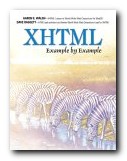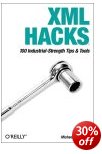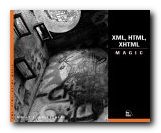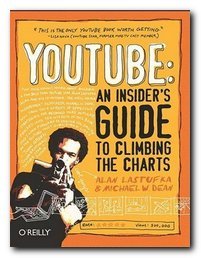convert from HTML to XHTML in easy stages
This book demonstrates how XHTML bridges the gap between yesterday’s HTML-based Web pages and tomorrow’s more sophisticated XML-based applications. The authors (including W3C guru Dave Raggett) start with a brief account of why XHTML has come to replace HTML. They include detailed coverage of the latest style sheets plus forms and scripts to create pages with ‘smart’ capabilities. One useful feature of the book is that there’s a summary list of relevant URLs at the end of each chapter – as well as an immensely heartening selection of free and shareware development tools listed amongst the appendices.
 These include Raggett’s own program ‘HTML Tidy’, which will automatically convert HTML to XHTML. All stages of coding are spelt out and explained in almost relentless detail. You will be in no doubt where you’re up to with XHTML after reading this book. It’s suitable for experienced HTML coders and new Web developers alike into the state-of-the-art XHTML world
These include Raggett’s own program ‘HTML Tidy’, which will automatically convert HTML to XHTML. All stages of coding are spelt out and explained in almost relentless detail. You will be in no doubt where you’re up to with XHTML after reading this book. It’s suitable for experienced HTML coders and new Web developers alike into the state-of-the-art XHTML world
As the title implies, the information is presented through examples. The code in question is highlighted in blue for quick comprehension. Unlike some tutorials, however, the code examples are accompanied by plenty of explanation for a well-rounded learning experience.
As the book progresses gradually into the more sophisticated elements of XHTML, it explains the differences between HTML and XHTML and defines key terminology.
You’ll get a feel for rich media formats like MPEG-4, SMIL and SVG, plus some pointers to valuable tools for authoring this advanced content.
An appendix includes detailed information on XHTML development tools such as tag editors, validators and converters to get your code from HTML to XHTML.
XHTML has the accessibility of HTML and the power of XML. This title provides an example-based introduction to the XHTML language. It contains practical techniques and tips for the developer to get started.
© Roy Johnson 2002
Aaron E. Walsh and Dave Raggett, XHTML Example by Example, Upper Saddle River NJ: Prentice Hall, 2002, pp.745, ISBN: 013040005X
More on technology
More on digital media
More on web design
More on computers


